
How to Use 9V Battery: Examples, Pinouts, and Specs
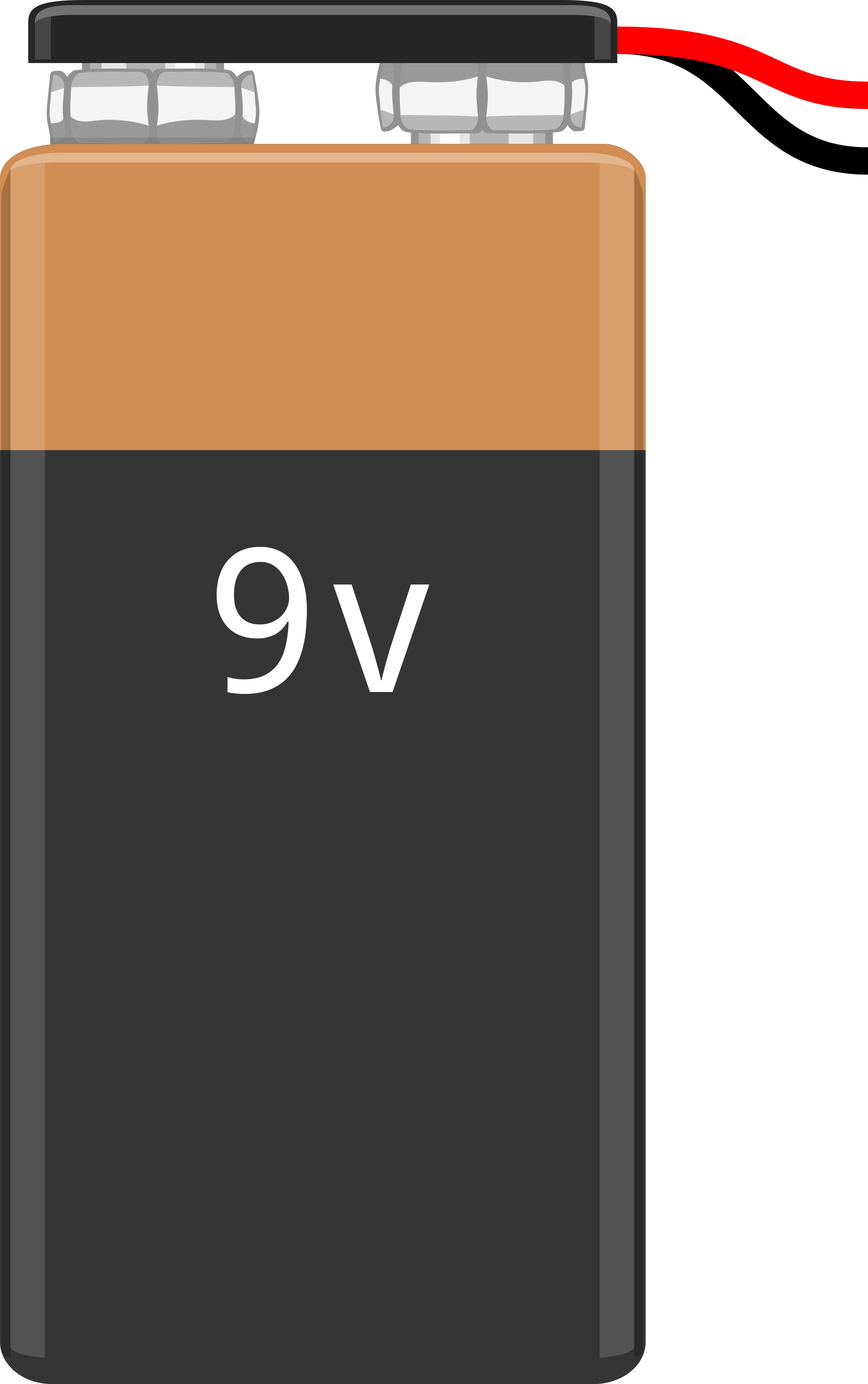
 Design with 9V Battery in Cirkit Designer
Design with 9V Battery in Cirkit DesignerIntroduction
A 9V battery is a compact, rectangular power source that is widely used in various electronic devices. It is known for its distinctive snap connectors and is commonly used in applications that require a reliable, but low current power source. Typical applications include smoke detectors, portable radios, guitar effects pedals, and DIY electronics projects, such as those involving an Arduino UNO.
Explore Projects Built with 9V Battery
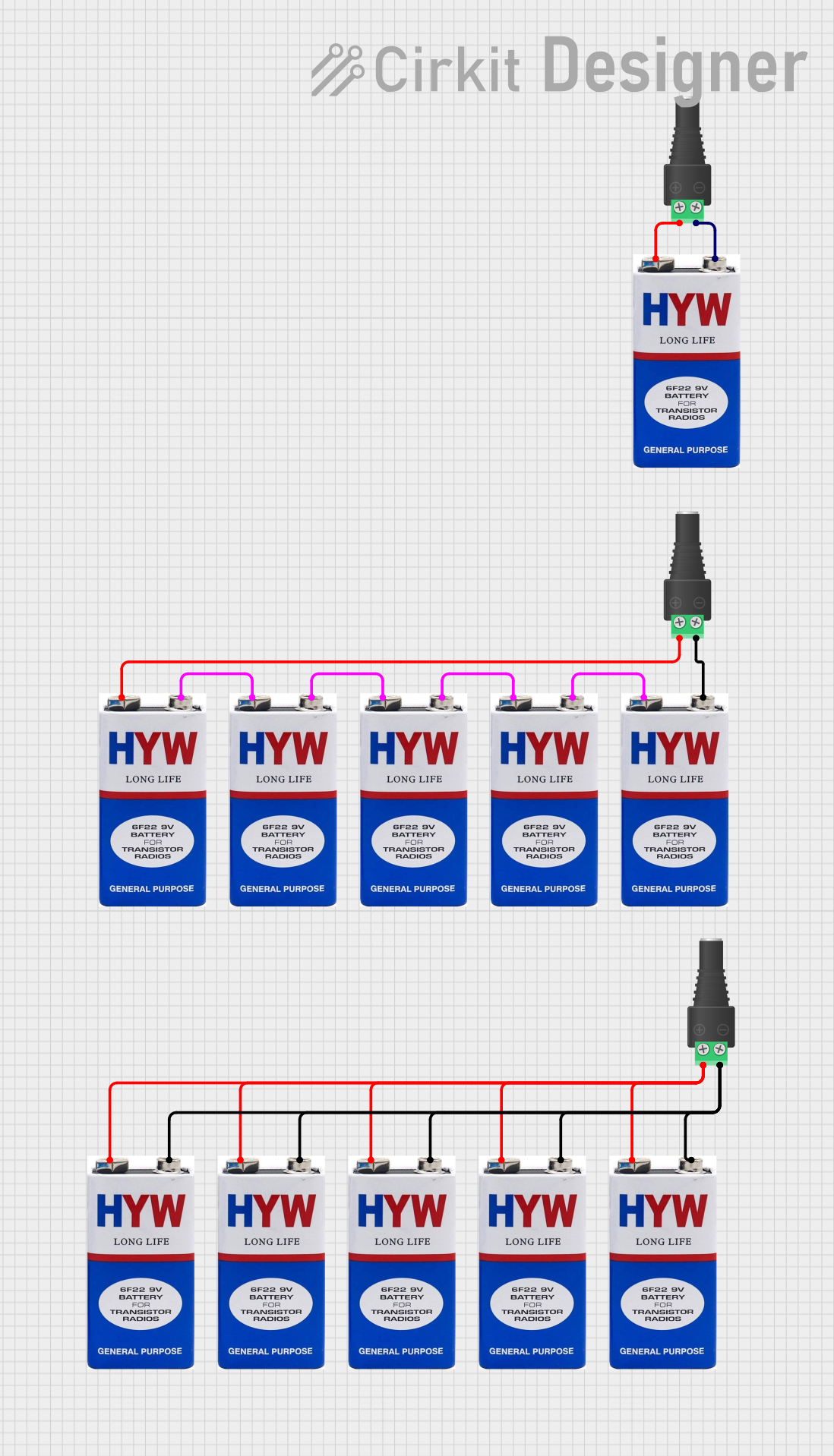
 Open Project in Cirkit Designer
Open Project in Cirkit Designer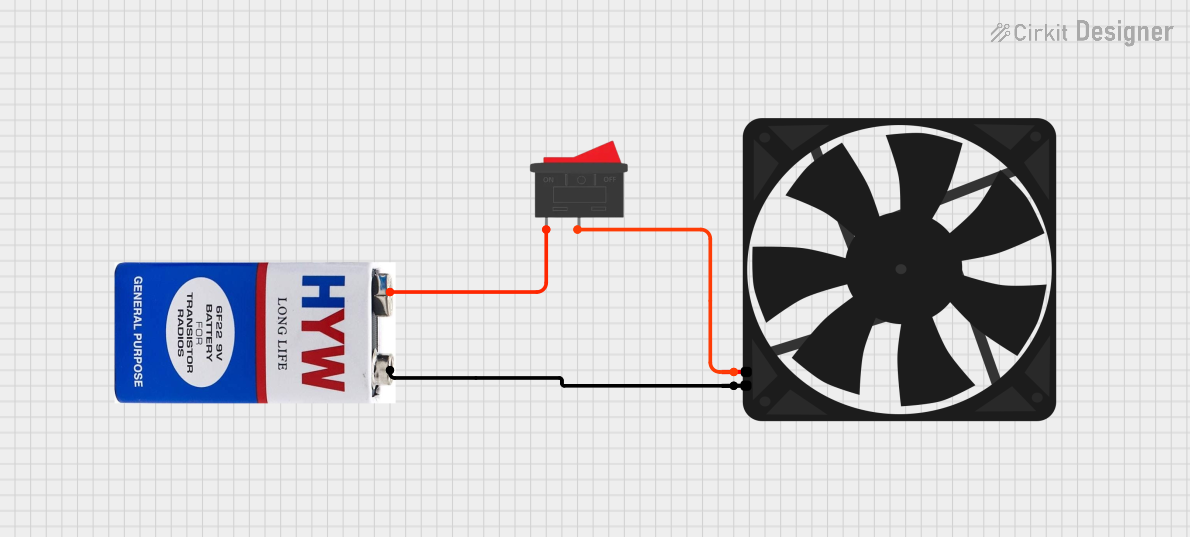
 Open Project in Cirkit Designer
Open Project in Cirkit Designer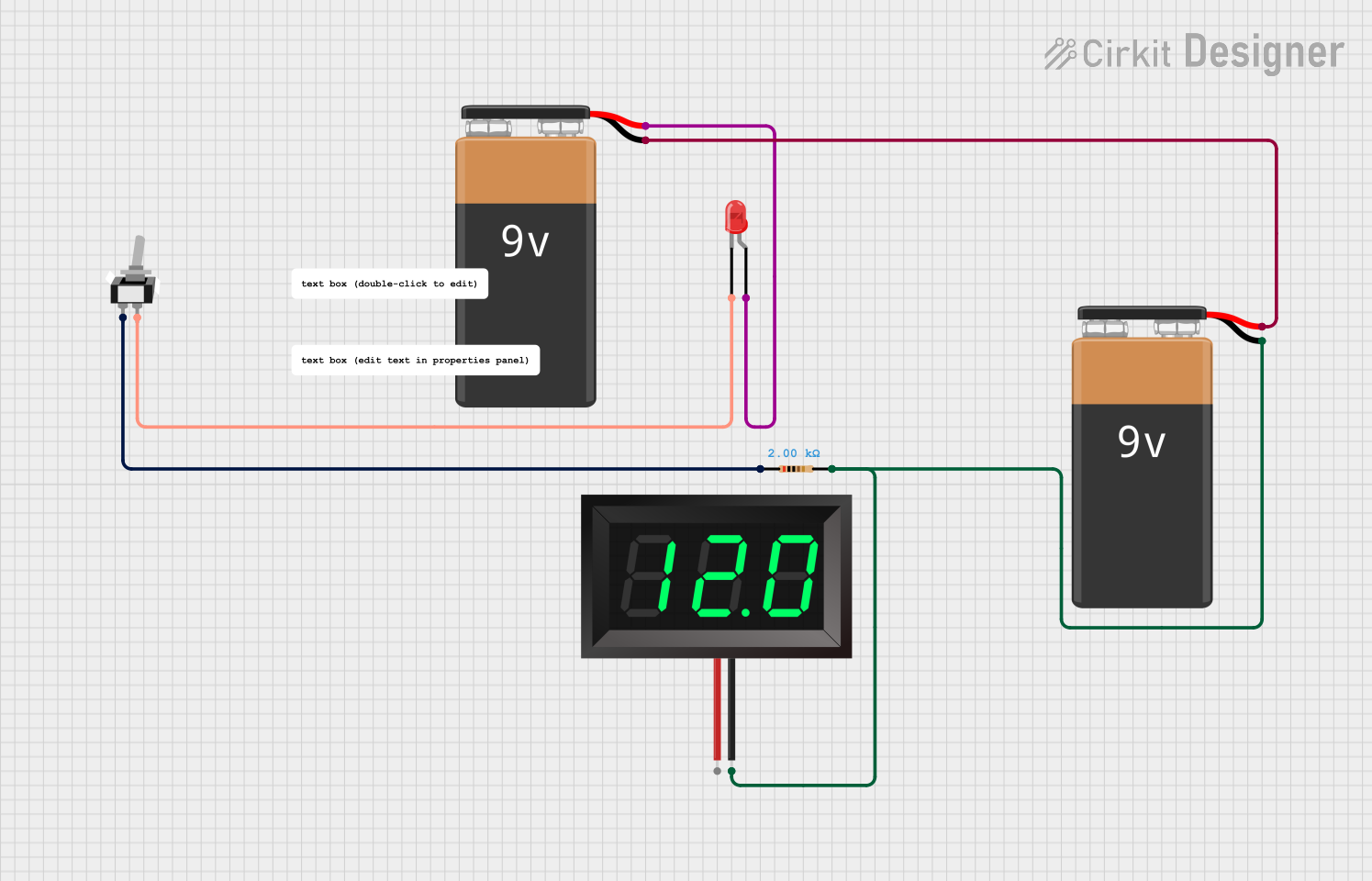
 Open Project in Cirkit Designer
Open Project in Cirkit Designer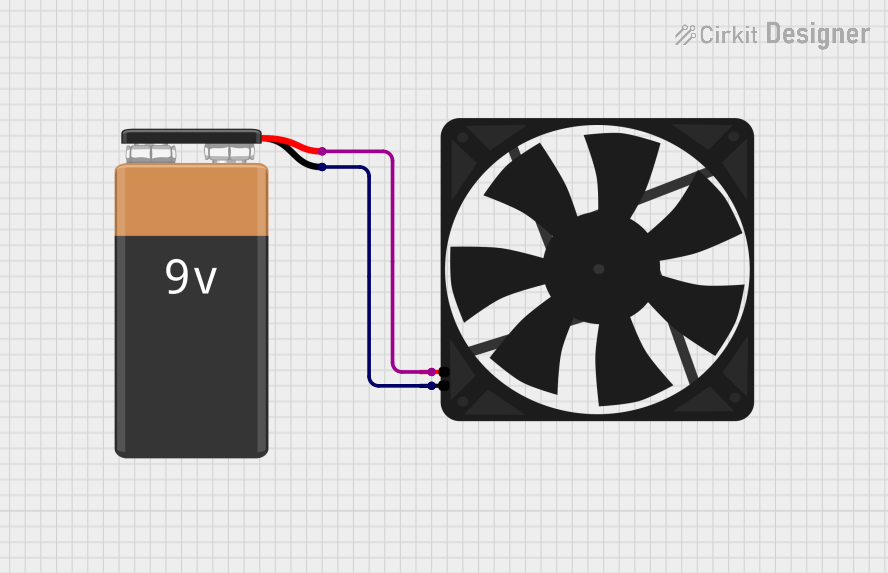
 Open Project in Cirkit Designer
Open Project in Cirkit DesignerExplore Projects Built with 9V Battery

 Open Project in Cirkit Designer
Open Project in Cirkit Designer
 Open Project in Cirkit Designer
Open Project in Cirkit Designer
 Open Project in Cirkit Designer
Open Project in Cirkit Designer
 Open Project in Cirkit Designer
Open Project in Cirkit DesignerTechnical Specifications
General Characteristics
- Nominal Voltage: 9V
- Chemistry Types: Alkaline, Lithium, NiMH (rechargeable), Carbon-Zinc
- Typical Capacity: 400 to 600 mAh for alkaline, higher for Lithium and NiMH
- Shelf Life: 5 years for alkaline, up to 10 years for Lithium
- Operating Temperature Range: Varies by chemistry (e.g., Alkaline: -18°C to 55°C)
Pin Configuration and Descriptions
| Pin | Description |
|---|---|
| + | Positive terminal (typically marked with a "+" sign) |
| - | Negative terminal (typically marked with a "-" sign) |
Usage Instructions
Incorporating a 9V Battery into a Circuit
- Identify the Polarity: Ensure you connect the positive terminal of the battery to the positive input of your device and the negative terminal to the ground or negative input.
- Use a Battery Clip: A 9V battery clip can be used for easy connection and disconnection from the circuit.
- Voltage Regulation: If your device requires a regulated voltage lower than 9V, use a voltage regulator to prevent damage.
- Battery Life: Estimate the battery life by dividing the battery capacity by the current draw of your device.
Best Practices
- Do not recharge a non-rechargeable 9V battery.
- Keep batteries away from metal objects to prevent short circuits.
- Remove the battery from the device if it will not be used for an extended period.
- Check the battery's expiration date and replace it if necessary.
Example: Connecting a 9V Battery to an Arduino UNO
// This example demonstrates how to power an Arduino UNO with a 9V battery.
void setup() {
// Initialize digital pin LED_BUILTIN as an output.
pinMode(LED_BUILTIN, OUTPUT);
}
void loop() {
// Turn the LED on (HIGH is the voltage level)
digitalWrite(LED_BUILTIN, HIGH);
// Wait for a second
delay(1000);
// Turn the LED off by making the voltage LOW
digitalWrite(LED_BUILTIN, LOW);
// Wait for a second
delay(1000);
}
// Note: Connect the positive terminal of the 9V battery to the 'Vin' pin on the Arduino
// and the negative terminal to one of the 'GND' pins. Do not connect the 9V battery
// directly to the '5V' pin on the Arduino as this bypasses the onboard regulator and
// can damage the microcontroller.
Troubleshooting and FAQs
Common Issues
- Device Not Powering On: Ensure the battery terminals are properly connected and the battery is not depleted.
- Short Battery Life: Check if the device's current draw is higher than expected or if the battery is near its expiration date.
- Inconsistent Power Supply: Ensure the battery contacts are clean and there is a good connection.
FAQs
Q: Can I recharge a 9V alkaline battery? A: No, attempting to recharge a non-rechargeable battery can lead to leakage or explosion.
Q: How do I dispose of a 9V battery? A: Follow your local regulations for battery disposal. Many areas have recycling programs for batteries.
Q: Can I use a 9V battery with my Arduino project? A: Yes, but ensure you connect it to the 'Vin' pin and not directly to the '5V' pin.
Q: Why does my 9V battery get hot when in use? A: This could indicate a short circuit or excessive current draw. Disconnect the battery immediately and check your circuit.
For further assistance, consult the manufacturer's datasheet or contact technical support.